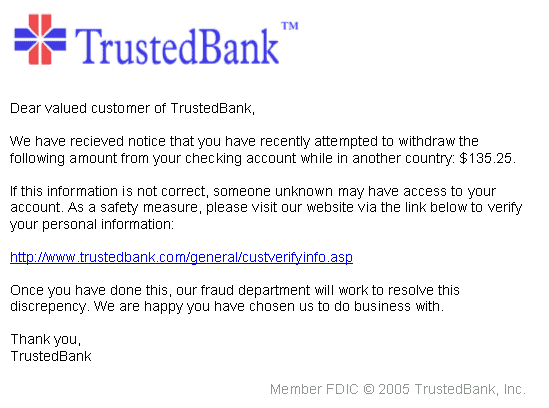Almost everyone has received a questionable e-mail from a seemingly reliable source. Perhaps, the e-mail looked like it was from your bank because it detected fraudulent activity on your credit card.
However, upon further inspection, you noticed that the actual e-mail address and its language looked a bit different than usual. At that moment, you probably realized that it is actually a phishing e-mail and trashed the e-mail.

In recent years, more experienced hackers have transitioned from e-mails to websites in order to launch their phishing campaigns. Because e-mail services like Gmail have gotten smarter and block many phishing e-mails, hackers have turned to websites to host their phishing links.
In these cases, hackers hack into legitimate website pages and use cross-scripting (XSS) attacks to post malicious phishing links that then lead website users onto fraudulent pages that ask for their credit card information and other personal data.
Cross-scripting attacks are a type of attack that inject malicious script on a trusted website and in this case, the malicious script are phishing links. These phishing links look almost identical to the legitimate website’s pages—making it more difficult for laypeople to detect the difference.
The most famous cases of this type of attack were the eBay phishing hacks in 2014. In these attacks, hackers used vulnerabilities in eBay’s product listings’ to launch cross-scripting attacks, that then placed malicious phishing links that prompted for users’ login credentials.
For website owners, your website becoming the involuntary host for phishing sites is one of the most terrifying situations. Due to Federal and PCI-DSS regulations, website owners are held liable to protect their users’ information. Thus, if a hacker plants phishing links onto a website, the owners are potentially subject to monetary lawsuits.
In response to the rise of these attacks and to protect website owners from liability, PCI-DSS suggests that websites dealing with customer data use web application firewalls for complete website protection, as it monitors incoming and outgoing traffic while protecting a web application’s vulnerabilities on a HTTP/HTTPs level (within the OSI Layer 7).
How Cloudbric Can Help You

Cloudbric provides elite full-service website security in accordance with PCI-DSS standards. This ensures website owners that their users’ information will be kept secure, while also promising that hackers will not be able to access your website to post malicious phishing links. Cloudbric protects against hackers’ phishing attempts by blocking all website defacement attacks, which allow cyber criminals to alter or change the contents on your website.
Cloudbric is powered by WAPPLES, an award winning logic based detection engine, that prevents hackers from adding phishing links by blocking any malicious traffic that is reminiscent to a hacker’s suspicious characteristics (high bounce rates, low average page views, extremely high number of attempts to log into website, etc).
This type of behavior is quickly cross checked with Cloudbric’s 26 unique preset web attack rules to help filter any harmful traffic that may be directed to your site. Anytime a hacker tries to access any of your page’s queries (login fields, contact fields, etc.) or webpages, Cloudbric blocks those injection attacks to prevent a hacker from gaining website admin access to post malicious content like phishing links.
In addition, to ensure full website protection, Cloudbric constantly monitors your website’s content, so anytime a suspicious change is actually made, we flag the changes for you to check and automatically block any changes that are detected as extremely dangerous. As hackers’ attacks have become more advanced, website owners need to look to increase their website protection. Phishing attacks are no longer only reserved to suspicious e-mails or personal blogs.
As seen with recent years’ attacks, just as large corporations are subject to being the host to phishing links, so is your website. In order to protect yourself, find a website protection service that protects your website completely. Cloudbric is the full service website that protects against phishing link attacks while also ensuring that hackers cannot enter your website under other motives.
For those who have already experienced phishing attacks, we suggest you contact all of your users to alert them of the breach and have your web application scanned for vulnerabilities and malicious links.
If you would like to learn more about Cloudbric’s logic-based WAF service, please contact us at global@cloudbric.com.





